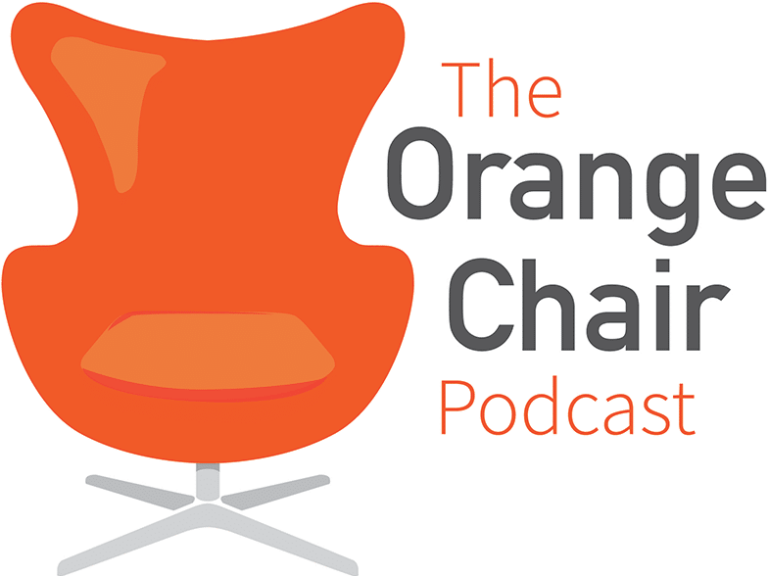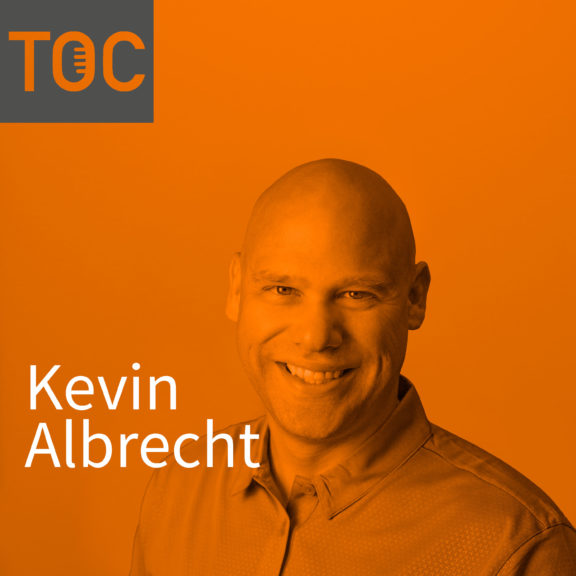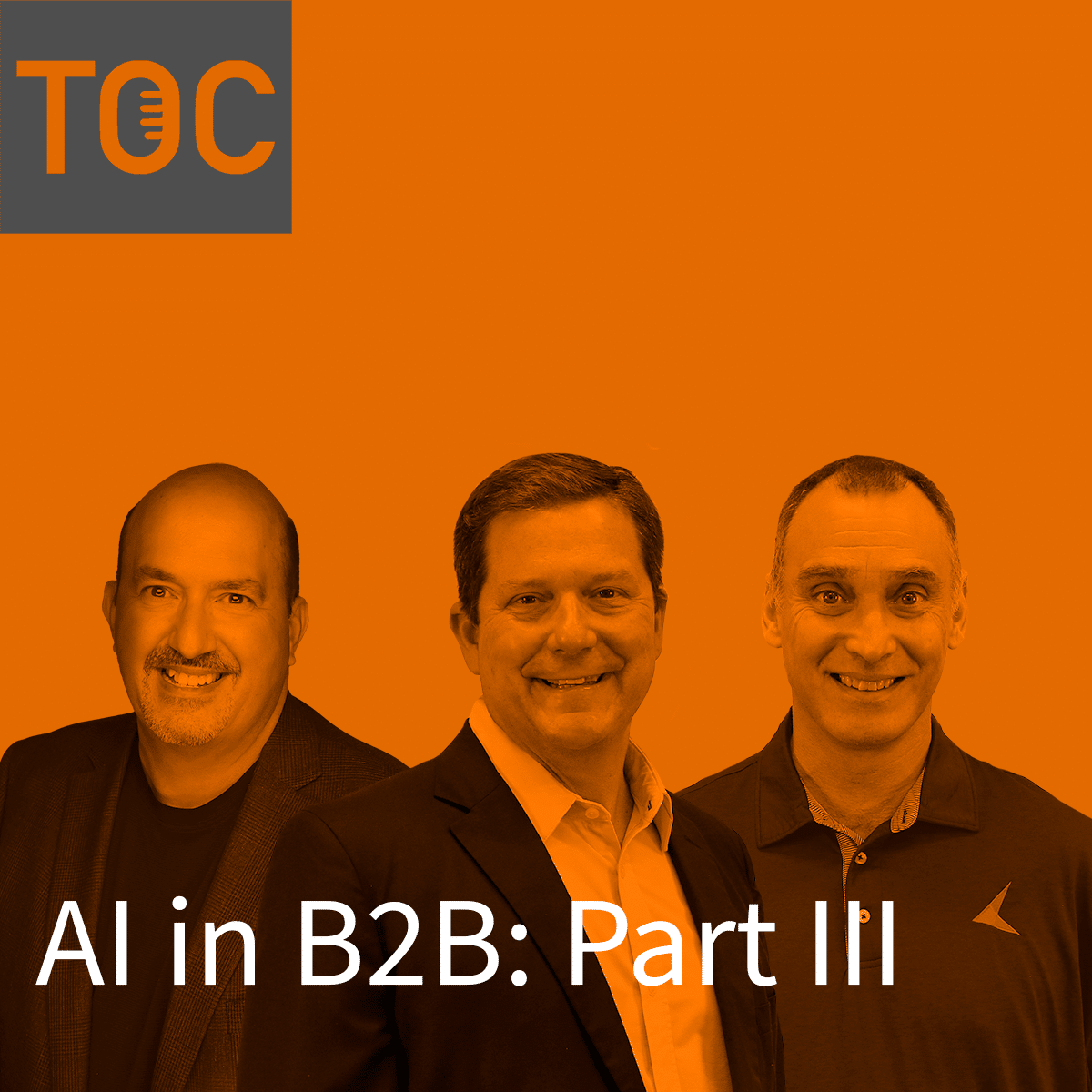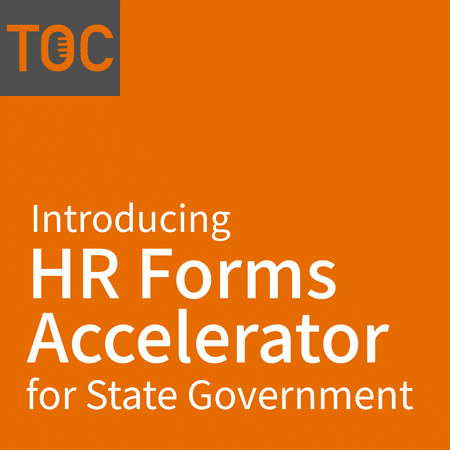This website uses cookies so that we can provide you with the best user experience possible. Cookie information is stored in your browser and performs functions such as recognising you when you return to our website and helping our team to understand which sections of the website you find most interesting and useful.
Listen now on your favorite streaming service!
presented by KeyMark


Summary
The following is a transcription from of The Orange Chair Podcast.
To listen to the full episode, or any other episode, you may do so by selecting your preferred podcast listening method on The Orange Chair Podcast page.
Transcription
Alex Frazier: [00:00:09] In today’s episode, we are discussing OnBase within government organizations. We have two experts in the field, Chris Johnson from KeyMark and Kevin Albrecht from Hyland. They’ve brought a ton of really great information to share. So, let’s jump on in.
Introduction
Alex Frazier: [00:00:31] Hey, everybody. Welcome back to the Orange Chair podcast. We have an exciting episode today.
We’re going to be diving into all things government and utilizing OnBase and intelligent automation solutions within the government space.
We have not one but two guests today, so I’m going to pitch it over to them and let them introduce themselves to you.
Chris Johnson: [00:00:51] Hey, good afternoon. This is Chris Johnson with KeyMark, been here for about 13 years, focused on the public sector and specifically state and local government, higher education and public utilities.
I have a fun fact about myself. I have two teenagers at the house and one just started high school. So, if you could all pray for me, I appreciate it.
Kevin Albrecht: [00:01:14] I’m Kevin Albrecht. I’m a government industry consultant with Hyland Software.
My job is to work with our partners and help them understand, you know, all the different things that Hyland and OnBase can do and how they fit into the tens of thousands of different lines of business and pain points that government agencies face. The fun fact I always give is I have never eaten a bowl of cereal.
Alex Frazier: [00:01:40] Like never eaten a bowl of cereal?
Kevin Albrecht: [00:01:41] Never, never. I can sit next to someone politely while they do it, but it’s not my favorite thing.
Alex Frazier: [00:01:48] So what is your go to breakfast meal?
Kevin Albrecht: [00:01:51] Usually yogurt and fruit and yogurt. That’s kind of what I do each day.
Chris Johnson: [00:01:55] So when you were 8 years old, what did you read at the breakfast table? You’re supposed to read the back of the cereal box, right?
Kevin Albrecht: [00:02:01] I know. I probably read the sports page.
Common Automation Challenges in Government
Alex Frazier: [00:02:07] Nice. All right. Well, we’re going to go ahead and kind of jump right in. I’ve got some questions for you guys, but I’d love to just, you know, let you guys talk. You’re the experts and we’re here to listen.
So, what are some common challenges or pain points that you guys have seen across the government space?
Chris Johnson: [00:02:25] So here and with my customers, particularly in the southeast and where we do business with customers all over the country. But I’m closest here in the Southeast.
The a few things that I’ve noticed over the last few years is an aging software infrastructure with particularly with state agencies, access databases, you know, old mainframe applications and a lack of flexibility around those lack of security around those.
I think that’s one of the things that leads into the second thing when I was thinking about is just data and application security in general.
You know, that’s a concern from phishing scams so on and so forth. Everybody’s on high alert from that. Particularly here in South Carolina, there’s it’s been in the news a great deal.
There is a need for caseworkers and what they think is a need for caseworkers, I think, at some of our human services agencies here. With a two and a half percent unemployment, it’s difficult to hire caseworkers and bring on additional bodies to do the work that’s demanded of the agencies.
Alex Frazier: [00:03:35] Yeah.
Aging Infrastructure and an Aging Workforce
Kevin Albrecht: [00:03:36] Yeah, I had an echo on that. You know, when you talk about the aging infrastructure and that can also be then the aging workforce, that happens a lot in government agencies.
Along with that can be a bit of a worry about bringing in new technologies. So big, big role that we always take is making sure that we’re not going to completely change someone’s life. That they can even continue to work in the system that they do day-to-day. There might be a case management system that was built 10 years ago and works fine and they’re not going to change it. Or it might be that they spend their day managing everything in Outlook. There’s a mindset that they can still kind of do that and do their job and that we’re not going to completely change everything. People can just be uncomfortable.
What is OnBase?
Alex Frazier: [00:04:23] Can you guys just going to give me a high-level understanding of OnBase? So, what is OnBase?
Kevin Albrecht: [00:04:33] Yeah. So, this is like when I tried to explain to my kids and my family what they’re like, “so, it’s like computers?” No, that’s not what it is.
At the high level, people will say things like, it’s content services (Gartner term), it’s enterprise content management.
I kind of start off with document management and then expand from there.
First thing, it’s getting that paper and managing things unsecured, like Chris said, and inefficiently bringing that into a locked electronic system. This system allows you to have easily configurable workflows.
When I talk about workflow or case management , it can be everything from things that are very linear to that.
Now, we have some information or an application for something that’s come in. I need to take a look at it, make a decision rout it to Chris. He takes action and approves it.
Also being able to leverage things that are much more complicated, where multiple people are working on information at the same time and based on the actions that they take that parallel. While this all happens in real time, the actions that other people need to take can change.
So, it’s kind of having that flexibility of not only bringing in information and digitizing it right as part of this digital transformation people talk about all the time, but also really giving government workers the ability to do things much more securely, much faster.
It really increasing that constituent experience.
OnBase Might Mean Something Different to Different Agencies
Chris Johnson: [00:06:11] Yeah. I think it’s a great explanation of what OnBase is.
You know, I’m asked that all the time about the field at a conference, whatever. What is OnBase? What does it do? It really depends.
How do I how do I explain it to you in a way that that makes sense? What type of agency are you in? What department within that agency?
OnBase can mean something different to different people and different agencies. Department to Department. I also find that with our customers, there’s that age-old “how we view KeyMark” and “how we view OnBase” as the thing that you did for us the first time.
So, you bought OnBase from us and, you know, 12 years ago to scan some stuff, store it and retrieve it. Maybe it integrated with an application. And you think, “oh KeyMark is that imaging company.”
Actually we’re much larger in that. OnBase is much more broad than that. That’s a difficult thing sometimes is to convey that message that it is a business process management application.
OnBase Examples
Kevin Albrecht: [00:07:19] I’m just going to say, we always encourage the customers that they know their pain points better than really anybody.
They’re the ones living it day-to-day. It’s really that flexibility for them to be able to identify maybe what they’re wasting most time on. We have a customer who had two people almost full time chasing around uniform equipment requests for some from internal city employees.
They were doing it through email. They were doing it through spreadsheets. And there was just all this back-and-forth. And they identified, “you know what?” This is something that we can go solve by creating our own little OnBase workflow for an intake and routing process.
Now they just do it a couple of minutes a day because it’s all become automated. But that’s not something that someone immediately said “we should go out into the market and find an equipment in uniform request processing software!”
Taking Ownership in OnBase Software
Chris Johnson: [00:08:18] Absolutely. So, to your point that our best customers that are most successful with OnBase are ones that take ownership in it.
OnBase allows our customers to take on ownership and it’s very user friendly to configure and so forth.
So, on the flip side of that, most of the customers who view OnBase as the thing that they bought it for hadn’t taken ownership in it. They don’t understand the product as much as they could, and they lean on us to support it and do any work on it.
But when they get folks trained and on multiple different levels within OnBase, they view OnBase as a platform to automate processes. So, they look to OnBase when they encounter a challenge.
Because they don’t want to go out and buy something to address that or continue to do it in a manual way. They look to OnBase and say hey that’s actually a pretty straightforward thing I can build a workflow in OnBase to manage that or stand up a case management solution to handle that.
All Agencies Are Not Created Equal, But Processes are Similar
Alex Frazier: [00:09:17] OK so, that kind of flows into my next question, which is do you guys find that a lot of agencies across the board are similar or are they different in terms of process? And if they aren’t different, kind of speaking towards that versatility of OnBase?
Chris Johnson: [00:09:34] So, I think what’s really is interesting to me after you work in government for a long time or public sector, however you want to define that, it’s not really a vertical.
Right? It’s not a vertical of knowledge like insurance would be or financial services would be. It is like just here in the state of South Carolina, there are 74 distinct agencies. And they all do different things. They had different missions. They have different business processes, have different requirements of a solution that they may partner with KeyMark to develop or configure.
But when you really back up, its business processes are inputs, processing, gathering information, making a decision and then an output, whether that be providing a service, providing a benefit on approval and approval of an application or whatever.
So, I think on some level that they’re similar in that regard. They’re very different, particularly at the state agency level.
Capture, Document Retention, Workflows. They’re All Part of Government Process.
Kevin Albrecht: [00:10:37] Yeah, I think that’s exactly right. And that can be in a big role that, you know, we unite. Chris will do this kind of government, industry people and helping advise the customers is breaking down.
If you have one agency that is using OnBase to manage their state like state fleet of cars, right where someone is submitting to them an application, say, reporting an accident or something that happened with the state vehicle. That’s really no different than someone submitting an application with the secretary of state’s office to create a new business. Right?
They’re sending in a form has to be captured, supporting documentation that has to be routed to somebody to make a decision. Maybe there’s some interaction between the applicant and the government official. Some correspondence. And then it’s, closed. The case is done.
Then with retention policies, it’s “how long are we going to keep those forms?” But all of those things are basically the same.
It can be a challenge sometimes for government agencies say, “oh, well, this is completely unique. No one does anything like this.” And we say “well, we actually have customers who have done something similar. We can show you exactly how to do that.”
OnBase Example: State Budget Office
Alex Frazier: [00:11:49] So, you guys have already kind of answered my next question, which is, you know, how can OnBase fit in the government space? But I’d love to just hear some elaboration or maybe some specific examples.
Chris Johnson: [00:11:59] Yeah. So, a unique solution that we’ve been working on of our customers over the last couple of years. And I say that because we keep modifying it each year and make it better and better.
I mean when you think of OnBase, you typically think, “scan, store, retrieve.”
We’re actually collecting data, budget data, from around the state that they submit to bring together and approve and go to committee. And massage. And say no. And all that kind of stuff, right? So back and forth between the agency and the budget agency. So anyway, it used to be something where the agency was emailing out Excel spreadsheets, to each agency to fill out, submit, go back and forth on.
Now they’re using OnBase to collect that data and content. Data and content that are associated with each budget request to go forward and be massaged and approved and so forth, and then compiled into a report that goes to the legislature and to the governor’s office for approval. Veto. Back and forth. Etc. So, we are managing all of that business process, which I think is pretty unique.
Alex Frazier: [00:13:14] So when you say they’re sending budget information to this agency; how many different departments or offices are sending that data?
Chris Johnson: [00:13:23] So eventually it will be over 100 because there 74 state agencies and some commissions and higher education and that kind of stuff. But yeah, they actually submit that data, but it has to be routed within each agency to three to four folks for approval and submission. So, we manage the back and forth within the agency and also with the submitting of the budget request as well.
Three OnBase Use Cases in the Government Process:
Kevin Albrecht: [00:13:50] Yeah. And I’ll just, add onto that, I’ll say that there’s really only three things government agencies do. And they are types of cases.
- There are people centric cases, ones where people are submitting things either, internal people or external. Submitting things in kind of applying for something that. A budget is just like that. There’re all these other agencies submitting something that decision has to be made.
- They also leverage it for keeping track of things. Either their buildings, like the cars in their fleet, etc.
- And then they also do inspections and investigations of people and things. So, either a routine inspection that has to happen. We do this all the time. The inspecting of a building or a boiler or something like that. Or an investigation for when something goes wrong. Like when they have a problem.
All of those things have a ton of forms, a ton of information, a ton of collaboration. And the OnBase platform allows you just to do that, to meet whatever that process is.
OnBase Example: State Departments of Administration
Alex Frazier: [00:14:51] So I kind of want to shift gears. But still, we’re still talking about OnBase. I do want to shift gears and talk specifically about a department of admin. How can that be an advantage to an entire state and all of the agencies within.
Chris Johnson: [00:15:09] So you mean leveraging a shared service department for other agencies to latch on to until it has?
Alex Frazier: [00:15:17] Thank you. That’s why I kind of got a little goofed up in my question.
Chris Johnson: [00:15:21] No, you’re good. That’s what we’re here for. Remember, you called us the experts, right?
Alex Frazier: [00:15:26] True. That is true.
Chris Johnson: [00:15:27] So now we have several different customers that are leveraging OnBase in that manner. One here in the Southeast that originally purchased OnBase to be the document platform behind an ERP rollout across the state.
That instance has become an incredibly beneficial tool for the entire state. So, Hyland was kind enough to allow them to open that up to other agencies to leverage that one instance of OnBase and do creative things with it, automate business processes, capture documents, whatever that happens to be.
But it has been an incredibly valuable tool for the state and they’ve really leveraged OnBase and taken it as a mission critical application, particularly for that agency.
So, it allows each one of those agencies to leverage your OnBase in a much more cost effective way. That also allows them not to have to have specific OnBase experience, configuration experience, because they have that at admin to support and maintain the product and continue to grow it over the years.
Ease of Access for Agencies Whose State is on OnBase
Alex Frazier: [00:16:40] Can you speak to maybe some ease of access if you do have that one instance of OnBase, what other departments could easily access documents or data because it’s a centralized solution.
Chris Johnson: [00:16:52] Sure. So, actually the Department of Admin actually houses that.
One of the things that has been unique for one Department of Admin customer is that they have automated a great deal of their business processes with OnBase and providing services to other agencies.
There are thousands of users of OnBase. They have Admin actually provide services to the other seventy-four agencies. So now they provide those services with OnBase in many ways. So, it has been a unique thing and it has made the interaction between the agencies and the Department of Admin much more efficient.
OnBase Helps Prevent IT Sprawl
Kevin Albrecht: [00:17:34] You know, and part of that will run into like IT sprawl. They run into that all the time. And state governments, CIOs hate that where each agency is buying their own kind of repetitive individual piece of software that has to now be maintained and updated and in doing that.
So, leveraging a shared service like Chris was talking about becomes very compelling, not only from a cost matter, but also just the security of it all, but also then adding controls based on roles and permissions.
Just because you’re going into OnBase and you have access to look at documents doesn’t mean that you have access to everything that’s in there. Right? That based on what you do and who you’re with, that’s the information that’s provided to you and the things that you are allowed to do within the system.
More OnBase Examples
Alex Frazier: [00:18:24] I would just love to hear some specific examples of the impact that OnBase has had on those paper processes. I know we’ve been kind of talking very high level about all of this, but I would just love to hear maybe take one or two specific examples and just say like this is what they were doing and now this is how they’re utilizing OnBase and how much it’s improved that process.
Chris Johnson: [00:18:46] Kevin, do you want to start?
Kevin Albrecht: [00:18:49] Well, you know, I’d say one of the things that I like for agencies like Department of Admin to do are handling all the H.R. processes, all the things that they deal with while managing across the state.
There is a laundry list of them, some of which we even, you know, at Hyland deal with. Making sure that people are meeting their compliance, that they’re streamlining their onboarding of becoming an employee, that they’ve taken all the certifications that they need to do.
All of those in the past would be done, you know, through email, through actual, you know, file folders that would have a piece of paper stapled to the inside that people would be checking the box to make sure that they’ve done something. But not allowing people to collaborate on all that.
So, you know, it’s those forced to process even dealing with government personnel can be a great starting point for a place like a department of administration.
Chris Johnson: [00:19:47] Yeah, this is kind of outside Department of Admin, but we have a customer who is an agency that that actually is responsible for managing all the financial institutions across the state.
They must audit them and they depict certain files and so forth. What we’ve been able to do with OnBase and ShareBase, their electronic file sync and share application that’s linked with OnBase, is allow instead of these agencies or these lending organizations emailing these huge files or whatever they’re doing. They’re actually uploading them to ShareBase.
OnBase is aware of that folder it ingested directly into OnBase and notifies someone that it’s arrived so they can begin their audit and review of that.
You don’t necessarily have to think of OnBase and KeyMark as these statewide applications. There are simple little things like that. You can do very cost effectively that make a huge impact on an agency’s day to day life.
Closing
Alex Frazier: [00:20:48] Yeah, great. Well. This has been super insightful and I one greatly appreciate you guys’ time, but I’d love to just hear if you have any final thoughts. Anything that you just would love to, you know, make sure that our listeners are aware of.
Kevin Albrecht: [00:21:06] I’ll go first and say, you know, there’s one thing that we love nothing more is when we don’t have a complete idea of everywhere OnBase is being used in a government agency that they have gone on and taken ownership of it and looked at us as a trusted adviser that can help them answer any questions, but that they go in and own the software and the capabilities themselves so that they can meet whatever their pain points. They are right that they’re able to go and kind of obtain a complete view of everything or every process and integrate with all these different backend systems that they have and not relying on someone with, you know, all kinds of coding expertise, all that that they’re really able to go in and own that themselves and meet their own needs.
Chris Johnson: [00:21:55] Yeah, I completely agree with that. Kind of stole my thunder there Kevin. No, that’s cool. I would totally agree. I think I’ll circle back to the idea that OnBase is an application that an agency or any organization can take full ownership in. And certainly, KeyMark would be there to guide them and provide assistance. But it is an application. That’s why we partnered with OnBase 20 years ago and we’re proud of our 20-year relationship. Because we were much like our customers and potential customers out the market looking for an application that we could take ownership in. We were partners with another, and we didn’t feel like that that was a sustainable relationship. And we evaluated Hyland and OnBase. So many years ago and we were able to take ownership of it and which we’re allowed to transfer that that capability to our customers and the ones who are the happiest take ownership and they run with it and they do great things. I was laughing the other day. We were I was out on one of our customers website and I was sitting with a co-worker and I was like I think that’s a unity form. We didn’t do that. I don’t even know anything about that. What are they doing? So, yeah, to your point. I love when they take and run with it and sometimes, we don’t even know.
Alex Frazier: [00:23:11] Yeah, that’s great. Kevin, thank you so much for joining us today. Chris, thank you also for joining us. This has been a great podcast and we’re excited about it.
Chris Johnson: [00:23:22] Thanks so much Alex.
Alex Frazier: [00:23:34] Well, that’s all that we have for you guys today. Thank you so much for listening to this podcast. The Orange Chair podcast is brought to you by KeyMark. If you liked this podcast, please leave us a rating. Like and subscribe to our podcast channels wherever you guys are listening to podcasts and you can even follow us on Instagram and Facebook, and we’d love to hear from you. This podcast is produced by Clay Tuten and me, your host, Alex Frazier. Until next time, bye guys.







